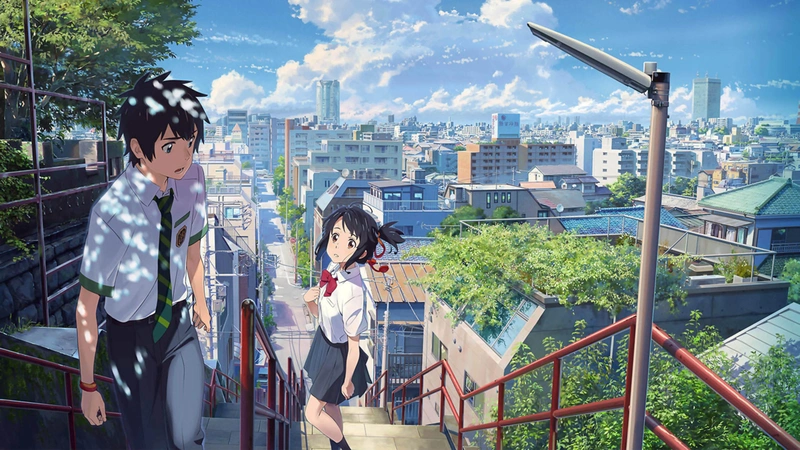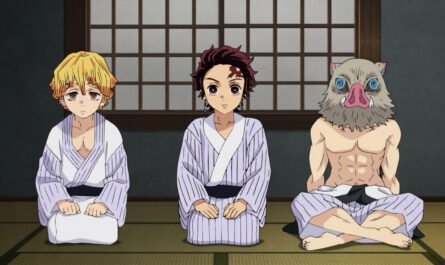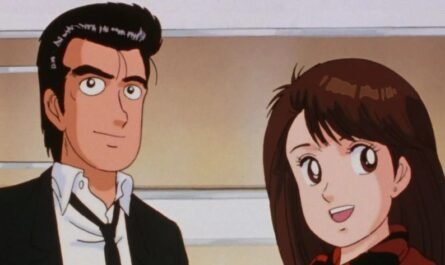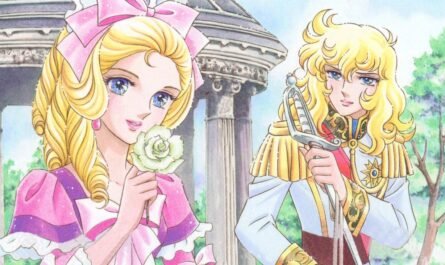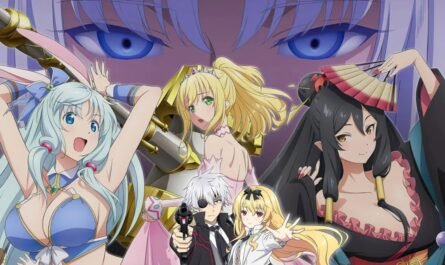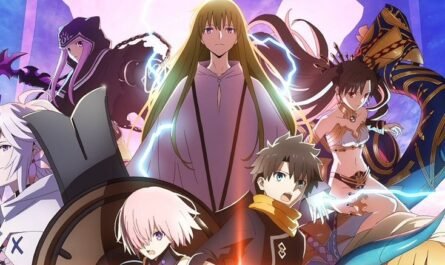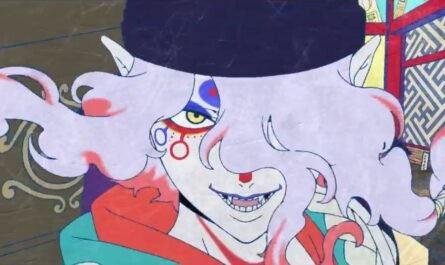Many people may be under the illusion that it was a natural event now, but in 2016 “Your Name.” was one of the incidents that symbolized the anime movie box office in the 2010s.
If we take a quick look at the changes in the box office of anime films over the past 30 years, Studio Ghibli led the box office in the 1990s, and in the 21st century, it’s been a little over ten years. So, The box office of animated movies stepped into the next stage.
The turning point is 2012. Speaking of what kind of year this year is, there is Mamoru Hosoda’s “Wolf Children’s Rain and Snow,” Hideaki Anno’s “Evangelion New Theatrical Version: Q,” and Tatsuya Nagamine’s “ONE PIECE FILM Z.” If you line up the proper nouns, you can probably get a general idea of what happened.
This year, despite the absence of Studio Ghibli works, the total box office revenue of animated films exceeded 40 billion yen for the first time. Since then, the box office revenue of anime movies has never fallen below 40 billion yen, and in many years exceeds 60 billion yen.
There is no doubt that there are changes in the business situation behind this, such as the establishment of cinema complexes and the increase in the number of animated films produced, but let’s not discuss them here.
The first thing I would like to focus on here is the 00’s sandwiched between the ’90s of Studio Ghibli’ and the ‘booming 10s’. It means that it was a “run-up period” in which the power was accumulated. The ‘boom of the 1990s’ is the result of the changes that occurred in the 2000s that crossed a certain threshold, leading to the present.
What is your name? What happened the night before
Now, let’s list the proper nouns again to remember what the 00s were like.
In 2004, Masaaki Yuasa directed “Mind Game” for the first time, and in 2006 Mamoru Hosoda announced “The Girl Who Leapt Through Time,” aiming for a feature film. Naoko Yamada appeared on TV in 2009 with “K-ON!”, making her directorial debut in the prosperity of late-night anime. “Evangelion New Theatrical Version: Introduction” was released in 2007, and “ONE PIECE FILM STRONG WORLD” was released in 2009, both recording hits involving far more fans than ever.
Of course, each of these is an independent phenomenon, but when you put “Makoto Shinkai makes his professional debut with ‘Voices of a Star’ in 2002” at the top of this landscape of the times, the feeling that the pieces fit together is overwhelming.
Moreover, Shinkai was the forerunner of a sporadic case in which a person who was a director in an independent production started working as a director on a professional feature film site. A director who starts working as a director will appear. This is also a turning point in an era.
Your name is. Incident
After his debut, director Shinkai constantly released works, and in the late summer of 2016, “Your Name.”] will be published. The film eventually grossed more than 25 billion yen at the box office and is currently the fifth highest-grossing movie in Japan.
Of course, many people thought it would be a hit, but few believed it would be a hit to this extent. And if it hits so far, it will significantly impact subsequent animated movies. This is the reason why the incident is an incident.
In any case, Director Shinkai and “Your Name.” occupies a position that symbolizes the situation surrounding animated films and their changes from the 2000s to the 2010s.
“Kimi no Na Wa.” When you watch.
Then, “What is your name? What kind of work was it? First of all, it appeared in front of traditional audiences in the form of the “best of” albums of various past works – Director Shinkai used this expression to explain the position of this work at the time of its release.
The sense of loss depicted in the form of “losing the other before the relationship is established” has been a repeated motif since “Voices of a Distant Star” (2002). Likewise, the experience of “Beyond the clouds, the promised place” (2004), which struggled with the number of materials and schedule, is deeply connected to the fundamental part of Shinkai’s “How to produce a feature-length animation.”
The composition of “going to meet to lose again” and “the other person who lost before the relationship was established” also appears here. The skillful editing that synchronizes the song and video shown in “5 Centimeters Per Second” (2007) changes from “a technique that creates lyricism” to “a technique that tells a story compactly” in “Your Name.” was inherited.
Child Who Chasing Stars (2011) is a work in which I tried to narrate the sense of loss that had been portrayed as lyrical until then by replacing it with narrative = storytelling.
It is a direct turning point that leads to. The change in the use of editing techniques is also the result of the awareness of storytelling coming to the fore.
Kotonoha no Niwa (The Garden of Words) (2013) is linked to this work with a cameo continuation of the Japanese language teacher played by Kana Hanazawa (in terms of setting, “a different person who is very similar”). Jokes aside, I can find connections, such as citations from Manyoshu and dramatizations that use asymmetrical relationships between two people.
Also, remember, “Your name is. The comedy production in the film’s first half is reminiscent of The Cat Assembly (2007). Made for NHK, this one-minute work is a gag work that includes a parody scene of the previous work, in which cats plot to take revenge on humanity when their tails are pecked, and the cat’s suffering is at a good tempo. It is drawn in a tendon and invites laughter. The breathing of this gag leads to the slapstick depiction of the two main characters, a man and a woman, whose hearts have been switched.
“What is your name? Finally, the unknown side of Makoto Shinkai, which only people who have seen “The Cat’s Gathering” have seen, became widely known to the public.
What is your name? Decisively new that led to the historical hit
Then, if there is anything new in this work, it is also “different.” First of all, in this work, Director Shinkai has newly obtained two new elements, “characters” and “drama that makes you think,” that are enough to support the feature-length, and these new elements are the basis of the historical hit.
The characters designed by Masayoshi Tanaka are capable of delicate performances that make you feel your inner self. Still, they are skillful in impressing character traits with their silhouettes and are much more popular than the characters in Shinkai’s works up to that point. It’s becoming
This strength of character directly led to the power of the appeal of the poster visuals and trailers. “Shinkai’s work, which was a little difficult to understand how to hold,” now has a “handle” that anyone can hold.
Also, in this work, the contents shown by the character’s activity level and the contents that can be read (interpretable) when viewed with the eyes after the action are different. In that respect, there is more room for the audience to think about how to perceive themselves than in “Children Who Chase Lost Voices,” where the characters’ actions are directly linked to the “conclusion of the work.” 2011’s shift from lyrical to narrative has reached the point of being a “thought-provoking drama.”
The idea of ’swapping the hearts of men and women is also in the previous work.
Then, “your name” is “narrative.” What kind of work is this?
The critical point is the gimmick that switches the hearts of the two main characters, Taki and Mitsuha. Of course, the idea of ”swapping the hearts of men and women” is also present in the previous work, but the feature of this work is that the exchange is asymmetrical.
As revealed in the story, Mitsuha has inherited the unique ability of “swapping other people’s minds” as an ancestral ability. In other words, Taki is “an existence chosen by chance through Mitsuha’s ability.”
In the preceding “swap of men and women,” the hearts are switched due to some trouble, but there are many cases where there is no replacement subject.
“What is your name? In this case, if you are conscious of the fact that it happened due to Mitsuha’s ability, “A girl who can save the village from crisis uses that ability to borrow the help of the future, and she is in front of her. Trying to overcome the crisis” story emerges.
A story that changes from Taki’s point of view and Mitsuha’s point of view
I pointed this out in a magazine article immediately after its release (the manuscript was included in the book Bokura ga Kanai Miwa Kansei). Still, when the Blu-ray was released later, I realized I had noticed this reading.
In the lecture (*) included in the bonus disc, Director Shinkai said, “Your name. , referring to the structure of He said, “What is your name?” is made up of a logline (summary) that says, “Boys and girls who met in a dream eventually meet in reality.” It explains that it is to save people from disasters.
This work begins with Taki’s monologue, where the exchange is depicted from Taki’s point of view, but most of the prologue progresses from Mitsuha’s point of view. This allows the audience to follow Mitsuha’s logline at the same time as the front logline.
From Taki’s point of view, “Your name is.” First, however, think of it as Mitsuha’s story. In that case, it will be a story about her as a party to the disaster, trying to grasp the “future possibilities” while borrowing the power of the future.
Looking at it this way, at the end of the story, Mitsuha, with Taki inside, asks her father, the town mayor, to evacuate the residents, but it doesn’t work out. This is because saving the residents is something that Mitsuha herself must accomplish as a “person concerned.” However, Taki won’t allow it, and Mitsuha goes through it alone.
Is Taki just a secondary character?
So, is Taki a secondary character who looks like the main character? Why is there an element that wouldn’t have been criticized for “altering history” if it had only been drawn from Mitsuha’s point of view from the beginning?
That’s because Taki was a necessary person to draw another drama of “forgetting” and “if a third party happens to be a party.” “What is your name? If there is another “hidden logline,” “it should be about Taki, who “became a party to a disaster that he thought he had nothing to do with his replacement, and changed the way he saw the world.”
For the first time in 1,200 years, a natural disaster called “falling fragments of a comet” occurred three years ago. There were dead people there. Taki appears in the main story as a person who has completely forgotten such past events. However, because Taki was chosen as Mitsuha’s replacement partner by chance, he became a party to the disaster. The fact that it was a coincidence that Mitsuha was replaced here implies that “anyone may be a party.”
When Taki fully realized he was a party, the disaster had already happened. This helplessness. After everything is over, all he can do is “fight against oblivion.”
At the time of the Great East Japan Earthquake, the people who were able to see that live video as news were nothing more than helpless third parties. And such a person cannot be a party even now. Taki is portrayed as a “distant” person.
That’s why Taki finally realizes that he was connected to the misfortune in the news by having the memories of the person concerned. However, at that time, the only thing a powerless third party could do was to “not forget what you must not forget.”
The “imaginative ability to think of distant misfortunes as your own” that emerges from this development is probably the core point of this work. In other words, Taki is our avatar who sees various things as “news.”
What is your name? Front and Back
If you think about it so far, “Your name is.” advances the “replacement” included in the “front logline” in the beginning, and, in the middle (after “zenzenzensei” ends), the story goes to the “hidden logline” on the side of Taki. To switch.
Then, after depicting the story of Taki’s oblivion (this is also contrasted with the “telling” symbolized by the braid that plays a significant role as a prop) in the middle stage, in the final scene, through the transcendence of space and time by Kuchikamizake, “Mitsuha will save the village.” Then, in the epilogue, it returns to the “front logline” again.
The logline on the table is an excellent thing that supports the entertainment of this work, as Director Shinkai said in the lecture. But perhaps the most dramatic and compelling part of the film is the two “hidden loglines.” The storytelling that combines these three loglines is “Your Name.”] gives birth to the depth of the work.
It is said that since the hit of this work, there has been an increase in animated films such as lighting-conscious art, youth stories incorporating fantasy elements, and scenes with insert songs, and this is undoubtedly true. That’s what blockbusters do. However, if the influence given to the subsequent work is the essence of this work, it is, of course, not so.
Looking at the essence of the work in this way, I envisioned that there would be something that could only be told by combining the three loglines. This complexity is called “Your name.’ it is more than just a masterpiece of the decade.

